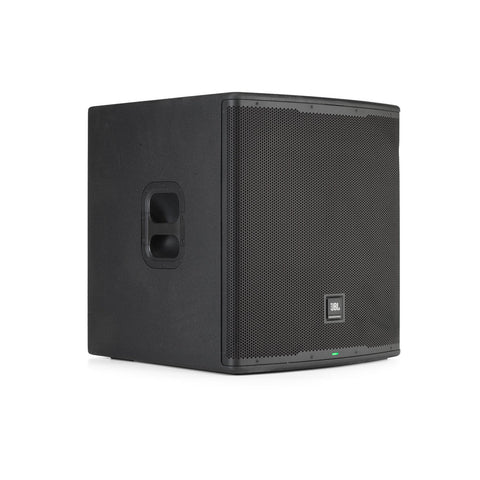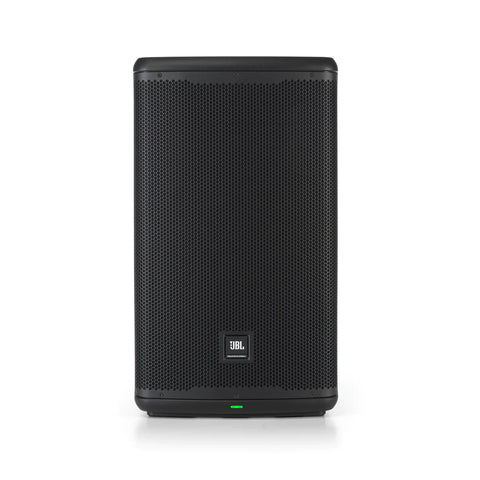In the quest for the perfect audio setup, one question often pops up: do powered speakers need an amp? It's a valid query, especially for those of us diving into the intricacies of sound systems for the first time. We're here to shed light on this topic, breaking down the essentials of powered speakers and their relationship with amplifiers.
Powered speakers, also known as active speakers, come with their own built-in amplifiers. This means they're designed to simplify your audio setup, eliminating the need for an external amp. But does this feature cover all bases for every audio enthusiast's needs? Let's delve into the nuances of powered speakers and discover whether they truly stand-alone or if there are scenarios where an additional amp might still be beneficial.
Do Powered Speakers Need an Amp?
In exploring the essentials of pro-audio setups, one common query we encounter is: do powered speakers need an amp? This question is pivotal, especially when considering the integration of high-quality sound systems. Within this section, we'll dive deep into understanding powered speakers, distinguishing them from passive speakers, and identifying factors that influence the need for an amplifier. Our insights aim to clarify these concepts for enthusiasts and professionals alike.
Understanding Powered Speakers
Powered speakers, also known as active speakers, are a staple in the pro-audio industry, featuring built-in amplifiers that eliminate the necessity for external amplification. This integrated design simplifies the audio setup process, enhancing portability and ease of use. Powered speakers cater to a variety of applications, from live performances to personal entertainment systems. The key advantage lies in their self-sufficiency; these speakers only require a power source and an audio signal to deliver high-quality sound. However, the question remains: is additional amplification beneficial or even necessary?
Difference Between Powered and Passive Speakers
Distinguishing between powered and passive speakers is crucial in understanding their amplification needs. Powered speakers are equipped with their own internal amplifiers, offering a plug-and-play solution for sound reproduction. This contrasts with passive speakers, which rely on an external amplifier to convert audio signals into sound. This fundamental difference affects setup complexity, portability, and overall sound quality.
- Powered Speakers: Ideal for straightforward setups where ease of use and integration are key. They're often favoured in scenarios requiring mobility and minimal equipment.
- Passive Speakers: Require an external amp, giving users more control over the sound system's customisation and potential power. They're preferred in fixed installations or setups where specific audio customisation is desired.
Factors Influencing the Need for an Amp
When considering whether powered speakers need an amp, several factors come into play. Primarily, powered speakers are designed to function optimally without additional amplification. Their built-in amps are meticulously matched with the speaker components to deliver optimised sound quality. However, certain scenarios might suggest the consideration of external amps:
- Venue Size and Acoustic Requirements: Larger venues or those with specific acoustic challenges may benefit from the nuanced control offered by external amps.
- Desired Sound Quality and Volume Levels: For audiophiles seeking the utmost in sound quality and volume, integrating an external amplifier could potentially enhance the listening experience, although this is often not necessary with high-end powered speakers.
-
Expandability and Customisation Needs: Users looking to build a highly customised sound system might find limitations in powered speakers' scalability. In such cases, combining passive speakers with dedicated amplifiers offers greater flexibility.
Powered speakers, hallmark components of pro-audio setups, are engineered to provide high-quality sound without the need for external amplifiers. Their built-in amps are designed to meet the speakers’ power requirements precisely, making additional amplification unnecessary in most cases. Understanding the distinctions between powered and passive speakers, along with the factors influencing amplification needs, empowers users to make informed decisions tailored to their specific audio projects. Whether for live performances, home entertainment, or professional installations, powered speakers offer a convenient and efficient solution for diverse audio needs.
Pros and Cons of Using an Amp with Powered Speakers
In the world of pro-audio, the equipment we choose drastically impacts the quality and control of our sound. This is particularly true when it comes to powered speakers. Let's dive into the advantages and disadvantages of coupling these speakers with an external amplifier.
Advantages of Using an Amp
- Boosted Volume Levels: Utilising an external amp with powered speakers can lead to a significant boost in volume. This is particularly useful in large venues where reaching the back row is a must. It's about delivering clear, powerful sound to every corner of the space.
- Enhanced Sound Quality: External amplifiers can offer superior circuitry and components compared to the built-in amps in powered speakers. This can translate to cleaner, richer, and more detailed sound, enriching the overall listening experience.
- Greater Customisation and Control: With an external amp, you gain more control over your audio setup. You can fine-tune settings to achieve the exact sound you’re looking for, creating a more tailored listening experience that can adapt to different genres and environments with ease.
- Risk of Damage: The most glaring downside is the potential for damage. As we've learned, combining power from an external amp with powered speakers that already have their own amplification can lead to overpowering, which in turn can damage the speakers, the amp, or both. Power plus power equals disaster isn't just a saying; it's a warning worth heeding.
- Increased Complexity and Weight: Adding an external amplifier to the mix introduces more components to manage and transport. Powered speakers are valued for their simplicity and portability, but incorporating an amplifier complicates setup and increases the overall weight and bulk of your equipment, making transportation and setup more of a chore.
-
Cost Considerations: Let's not forget the financial aspect. Quality amplifiers aren't cheap, and investing in one could significantly increase the overall cost of your audio setup. It's essential to weigh the benefits against the additional investment to determine if using an external amp is the right choice for your needs.
In the context of powered speakers and pro-audio equipment, understanding the balance between enhancing audio quality and managing the risks and costs associated with external amplifiers is crucial. Remember, our goal is to create the best possible sound experience without compromising the integrity of our gear or our budgets.
Benefits of Powered Speakers
When we delve into the world of pro-audio, we often come across the term "powered speakers." As enthusiasts and experts in the field, we've identified several key benefits that make powered speakers an attractive choice for both beginners and professionals in the audio domain.
Firstly, the Simplified Setup of powered speakers stands out. These devices integrate amplifiers within their housing, eliminating the need for external amplification. This feature not only simplifies the setup process but also reduces the clutter and complexity often associated with traditional audio systems. For those of us who value a straightforward and efficient audio setup, powered speakers present a clear advantage.
Moreover, powered speakers are renowned for their Portability. Given that the amplifier is built into the speaker, there's less gear to transport, making powered speakers an ideal solution for mobile DJs, live performers, and anyone who needs a robust audio setup on the go. Their compact design does not compromise on sound quality, offering an optimal balance between size and performance.
Enhanced Sound Quality is yet another significant benefit. Manufacturers of powered speakers can precisely match the amplifier to the speaker's components, resulting in optimised performance and sound reproduction. This synergy ensures that the speakers deliver clear, accurate, and immersive audio experiences, making them a preferred choice for audiophiles and pro-audio enthusiasts alike.
Lastly, Ease of Use is a noteworthy advantage. With less equipment needed to achieve high-quality sound, powered speakers offer a user-friendly experience. Their design usually includes volume controls and sometimes even EQ settings directly on the speaker, providing users with convenient and direct control over their audio output.
In our quest for the perfect audio experience, powered speakers emerge as a versatile and efficient solution, encompassing qualities that cater to a wide range of audio needs and preferences. Their blend of simplicity, portability, sound quality, and ease of use positions them as a standout choice in the vast landscape of pro-audio equipment.
Our Top selection of Powered Speakers
When diving into the vast world of pro-audio, one can't overlook the pivotal role powered speakers play. At TOMS, we're all about providing solutions that enhance your audio experience, whether it's for gigging, home studios, or professional setups. In navigating the broad selection at our disposal, we've cherry-picked a few powered speakers that stand out for their quality, performance, and reliability.
Powered speakers, by design, integrate an amplifier within their structure, eliminating the need for external amps. This feature not only simplifies the setup process but also ensures a cleaner, more direct sound path. We've highlighted models that embody the best of what powered speakers have to offer, ensuring you receive top-notch sound quality without the hassle.
To sum up, our selection at TOMS focuses on powered speakers that bring uncompromising sound quality, portability, and ease of use to your doorstep. Whether you're setting up a home studio, gearing up for a gig, or enhancing a professional audio setup, our range of powered speakers is curated to meet and surpass your expectations. Dive into our collection today and discover the perfect powered speaker to elevate your audio experience.
Conclusion
We've explored the world of powered speakers and their built-in amplifiers, showcasing how they're a game-changer for anyone in the pro-audio space. With TOMS' handpicked selection, we're confident you'll find speakers that not only meet but exceed your expectations in terms of quality, performance, and reliability. Whether you're setting up a home studio, hitting the road for gigs, or enhancing a professional audio setup, these powered speakers are designed to deliver superior sound quality with the added convenience of wireless connectivity. Trust us, investing in the right powered speakers can transform your audio experience, making every performance unforgettable.
Frequently Asked Questions
How do you know if speakers need an amp?
If your speakers are not loud enough, the sound quality diminishes when playing music directly from a computer, or audio fidelity drops with headphones, it might indicate the need for an amplifier to enhance sound quality.
Do speakers sound better with an amp?
Yes, amplifiers can significantly improve speaker sound quality by increasing the amplitude of audio signals, allowing for increased volume, detail, and clarity in the output sound.
How many amps is a powered speaker?
Powered speakers typically have a maximum draw of around 5.5 amps. However, this can vary depending on the model and manufacturer of the speaker.
What is the difference between a powered speaker and an amplifier?
A powered speaker, also known as an active speaker, contains an in-built amplifier and requires AC power to operate. In contrast, a passive speaker relies on an external amplifier to produce sound.
Can I hook up powered speakers to a receiver?
Yes, powered speakers can be connected to a receiver. This setup enhances the audio experience, whether you're setting up a home theatre system or improving your TV's sound, and is both simple and efficient.




